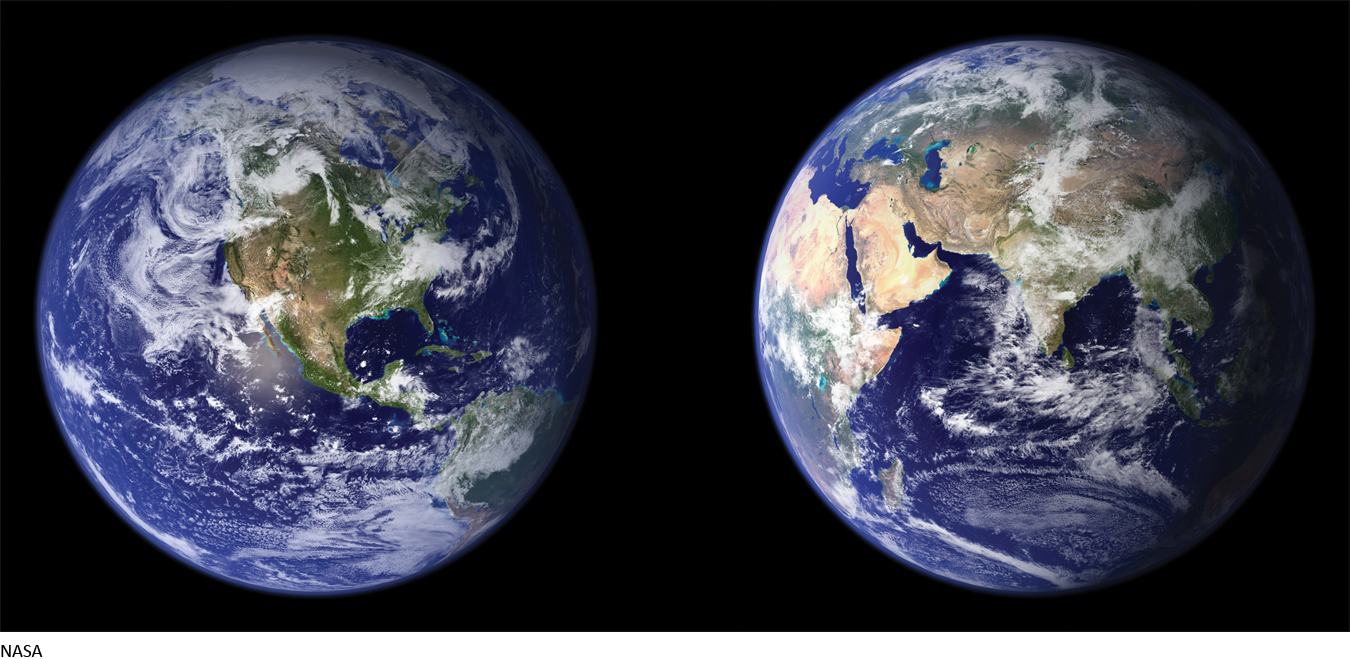115

Uncovering Earth’s Systems
CHAPTER LEARNING OBJECTIVES
By reading the sections of this chapter, you will learn:
- 5-1 Most of Earth’s surface is covered with flowing water that radically changes the landscape
- 5-2 Earth is surrounded by a thin, multilayered envelope of gas that has changed since life became prominent
- 5-3 Volcanoes and earthquakes reveal energy from a molten interior driving Earth’s surface to shift positions
- 5-4 Earth’s magnetic field emanates from its spinning, molten interior to create a protective shield from the Sun’s harmful radiation
- 5-5 A rapidly growing population is altering our planetary habitat
116
When you think of astronomy, you might have visions of standing outside looking up into the night sky and trying to recognize constellations or patiently waiting for a shooting star to pass by. Or, you might imagine landscapes of faraway planets orbiting a distant sun, or even of enormous swirling galaxies of stars at the edge of the universe. It might, however, surprise you to know that many astronomers spend much of their careers studying the planet beneath their feet—our home planet Earth. Just like the Sun is one of the most important stars to study because it is so close, Earth is one of the most important planets for astronomers to study because it is the planet we know the best.
Of all the worlds of the solar system, only Earth is uniquely a blue planet, because most of its surface is covered with liquid water. We will learn that water exists in many places throughout the solar system, but water can exist on Earth’s surface in all three of its forms: solid ice, liquid water, and gaseous water vapor. The image above shows our water-covered planet, with its distinctive green patches of vegetation dotting the surface and swirling white clouds of water vapor moving just above the surface. Compared with the Moon, whose seemingly dry surface has been ravaged by billions of years of impacts by interplanetary debris, Earth initially seems to be an inviting and tranquil place.
Yet Earth’s quiet outer appearance is deceiving. The seemingly solid surface of the planet is in a state of slow but constant motion, driven by energy from flowing molten rock within Earth’s interior. At the same time, energy from sunlight drives wind in Earth’s atmosphere, the thin layer of gas surrounding our planet, to rapidly move and churn, resulting in sometimes violent weather moving water and energy around our planet.
Unseen in these images is an immense collection of tiny subatomic particles that rapidly wander around the outside of Earth in two giant belts, shaped by Earth’s magnetic field. And equally unseen are trace gases in Earth’s atmosphere whose delicate abundances may determine the future of Earth’s fragile climate, and on which may depend the survival of entire species, humans included.
In this chapter our goal is to learn about Earth’s systems—its hot, active interior, its ever-changing surface, and its dynamic atmosphere—and how we interact with these systems as stewards of our planetary home. Understanding Earth from the outside, as an astronomer sees our home planet, makes it easier to understand the similarities and differences of other planets in our solar system, the subjects of the next two chapters.